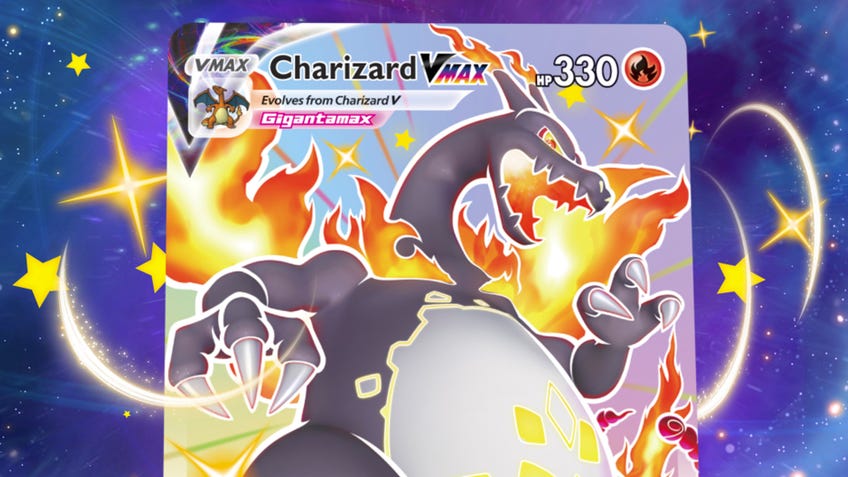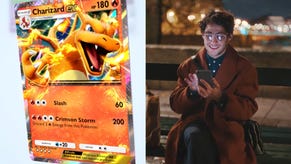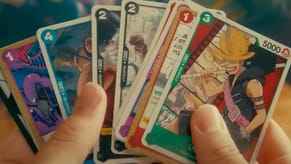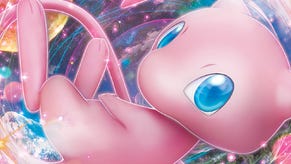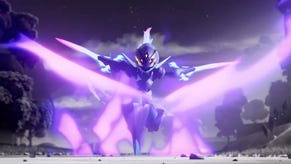Pokémon TCG rarities explained
From Reverse Holo to Shadowless, we've got you covered.
Pokémon cards are booming in popularity again, thanks to some record-breaking sales and celebrities getting in on the excitement around the game’s hottest pulls.
There are thousands of Pokémon cards available today, ranging from basic cards that can be found in every player’s collection to some of the most valuable Pokémon cards that can cost hundreds or even thousands of dollars to pick up.
While identifying Pokémon card rarities can be tricky - whether you’re hoping to sell them or just work out how special your collection is - it’s also easier than you think. There are a number of ways to identify the rarity of Pokémon cards just by looking at the cards you own. Don't forget to check if your Pokémon cards are fake while you're at it, too!
We’ve put together this helpful guide to help you tell Pokémon card rarities apart. If you’re wondering whether your card is a misprint, a Secret, or a Promo, there’s no better place to start.
Common, Uncommon and Rare
There are three basic levels of Pokémon cards, each with their own unique symbols.
Black circle (●): Represents a Common card. As the name suggests, these are the most widely available cards. Each Pokémon TCG booster pack includes six random common cards.

Black diamond (⬥): Marks an Uncommon card. These are slightly more unique than Common cards, but will still make up a large part of most Pokémon card collections. There are three Uncommon Pokémon cards in each Pokémon TCG booster pack.

Black star (★): Signifies a Rare card. These are among the more sort after cards in the TCG, as well as appearing on some of the game’s most powerful cards. There are often only ever one of these in each booster pack.

Promos
Promo cards given out at Pokémon TCG tournaments and other special events are marked with a unique Promo star icon (sometimes known as a Black Star Promo). These are cards that aren’t available in normal sets or booster packs and are therefore often harder to get hold of.

Holographic
Holographic Pokémon cards are often called “Shinies”, and for good reason - each card features a special holographic version of its artwork printed in reflective ink. The shiny Charizard from the first edition of the game is one of the most popular and sought-after Pokémon cards in existence. A Holo card is estimated to appear in only one in every three booster packs.
Holographic cards are only visually different and include identical artwork and gameplay text.
Reverse Holographic
As well as Holographic cards featuring shiny artwork, there are also Reverse Holographic cards that feature the rest of the card frame printed in the reflective ink. These Reverse Holos can be of any type.

Ultra Rare
Ultra Rares are always foil cards, and come in a number of different variants: EX, GX, LV.X, Prime, Star and Legend Pokémon cards.
Many can be identified by the word or symbol next to the name of the card. For example, Pikachu EX is the Ultra Rare variant of Pikachu. In the case of Pokémon Star cards it is a gold star, while Prime Pokémon cards can be identified by the holographic gold colour of the card name and the card’s shiny silver edge.

They are unique in that they feature different artwork and/or ability text to their more common alternatives. The artwork may extend outside of the normal frame to become half-body or full art. In the case of Pokémon Legends cards, the holographic artwork extends across two separate cards that form the single card when placed next to each other.
They are among the hardest cards to get hold of thanks to their unique appearance and gameplay, and often command some of the highest prices among collectors.
Half Art

Half Art cards fall under the category of Ultra Rare. They feature different artwork to standard cards, with the artwork extending beyond the usual frame to cover more of the card. However, the artwork does not cover the entire card, remaining on the top half, making these less visually distinct than Full Art cards.
Half Art Pokémon cards can include EX, GX and V cards. They are also known by a number of alternate names, including Half Body and Regular Art cards.
Full Art

As the name suggests, Full Art cards - sometimes known as Full Body cards - are among the most visually impressive. They feature artwork that covers the entire card, stretching up to the very borders of the card - and some even beyond that.
Full Art Pokémon cards first appeared in the Black & White set, featuring variants of Pokémon EX cards. Later Full Art Pokémon cards have included version of GX and Trainer cards.
Full Art cards are among some of the hardest to get hold of. Two Full Art Pokémon cards are estimated to appear in each booster box. As each booster box includes 36 individual booster packs, that means Full Art cards only appear in one in 18 booster packs.

Secret Rare
Secret Rares are special in that they feature a collector card number that goes beyond the printed number of cards in a set. You can tell if you've got one by looking at the number at the bottom of the card - if the number on the left of the slash is higher than the number on the right, you're in luck.
They are typically foil cards and feature unique artwork. Similarly to Reverse Holos, Secrets can be a variant of a more common card in the set but with a higher collector card number. However, they feature the same gameplay ability text as the original card.

Rainbow Rare
Rainbow Rares are similar to Secret in that they feature unique artwork and a collector card number higher than the set number. However, they are named for the distinctive rainbow effect of their holographic finish.
Rainbow cards first appeared in the Sun & Moon set, with variants of GX Pokémon, as well as Trainer cards. More recently, Rainbows have included VMax cards from the latest Sword & Shield expansion.
While a number of Rainbows have been released over the years, they are still hard to pull from a booster and are often worth more as a result.

Shadowless
You may have heard of Shadowless Pokémon cards, likely as the result of cards such as the Shadowless Holographic Charizard fetching record prices at auction. They are the holy grail of the TCG, and sell for ridiculous money as a result.
'Shadowless' is actually just a nickname used to describe the visual difference between cards printed in the earliest Pokémon TCG sets and later printings of the cards.
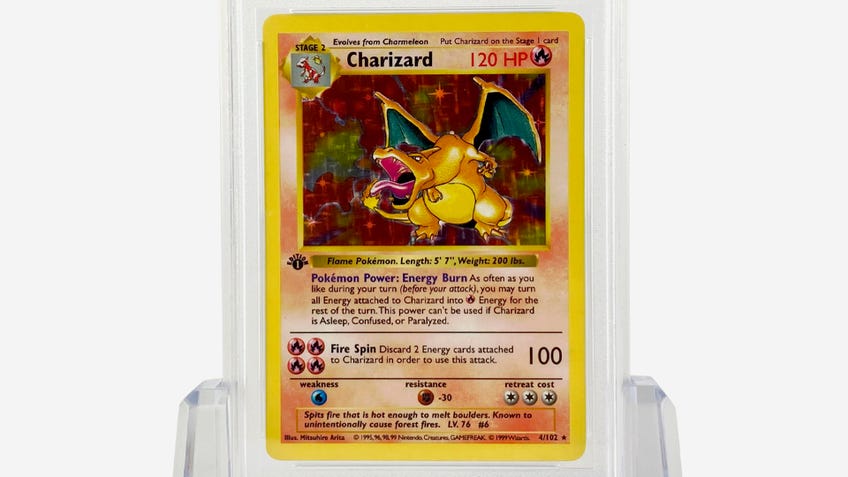
As the name suggests, shadowless cards do not feature a shadow effect around the edge of the card’s artwork frame. The shadow is easiest to see on the right hand side of the main illustration. The shadow was introduced in later print runs of the Pokémon TCG’s first edition, making shadowless cards from the first edition’s Base Set a difficult find as they represent some of the very first Pokémon cards released.
Misprinted
Misprinted Pokémon cards, sometimes known as Error cards, are some of the most unique Pokémon cards out there. These cards feature unusual visual elements caused by printing errors that may have been corrected in later printings. This makes cards with these misprints especially hard to come by, as they may be very limited in quantity and not officially recognised as a variant.

